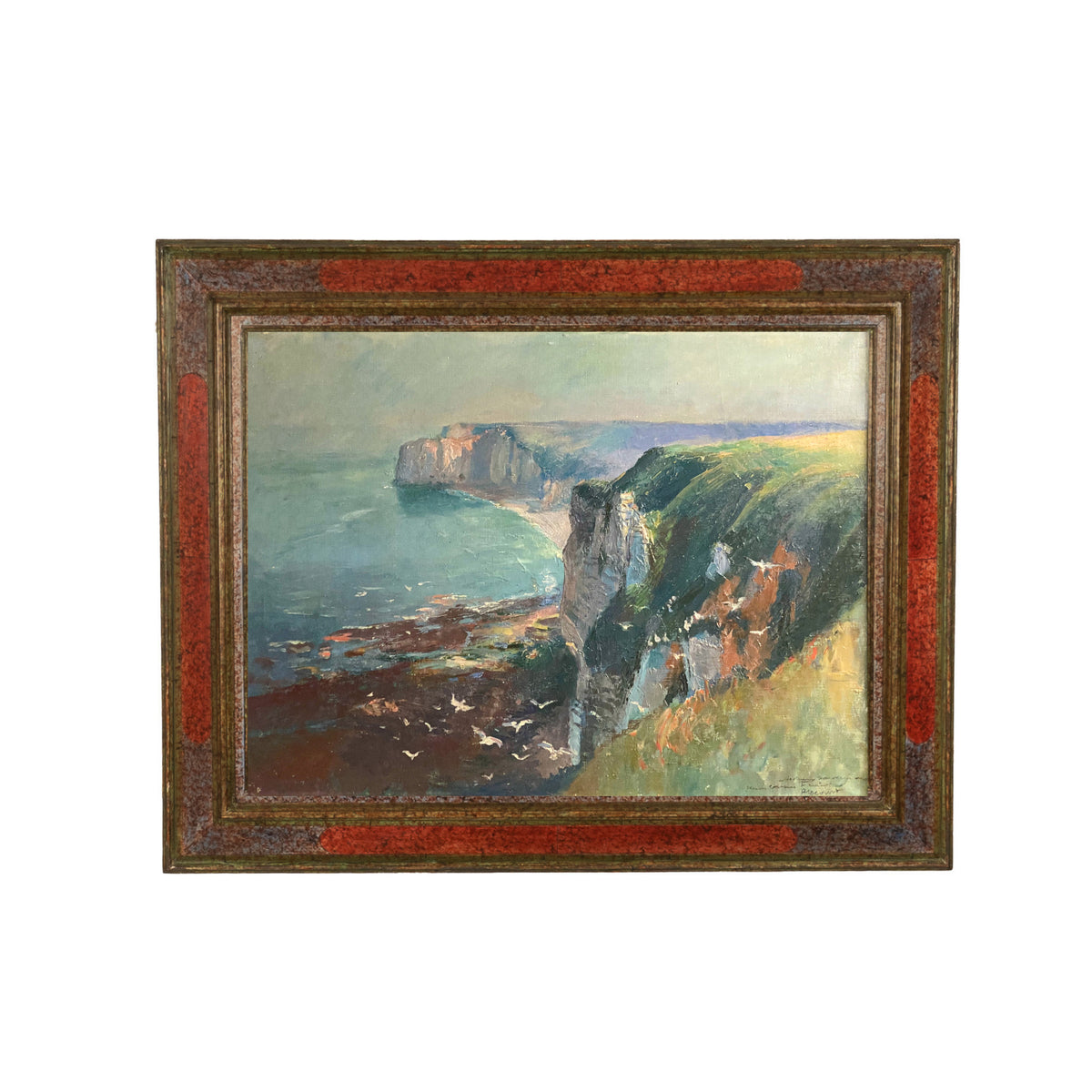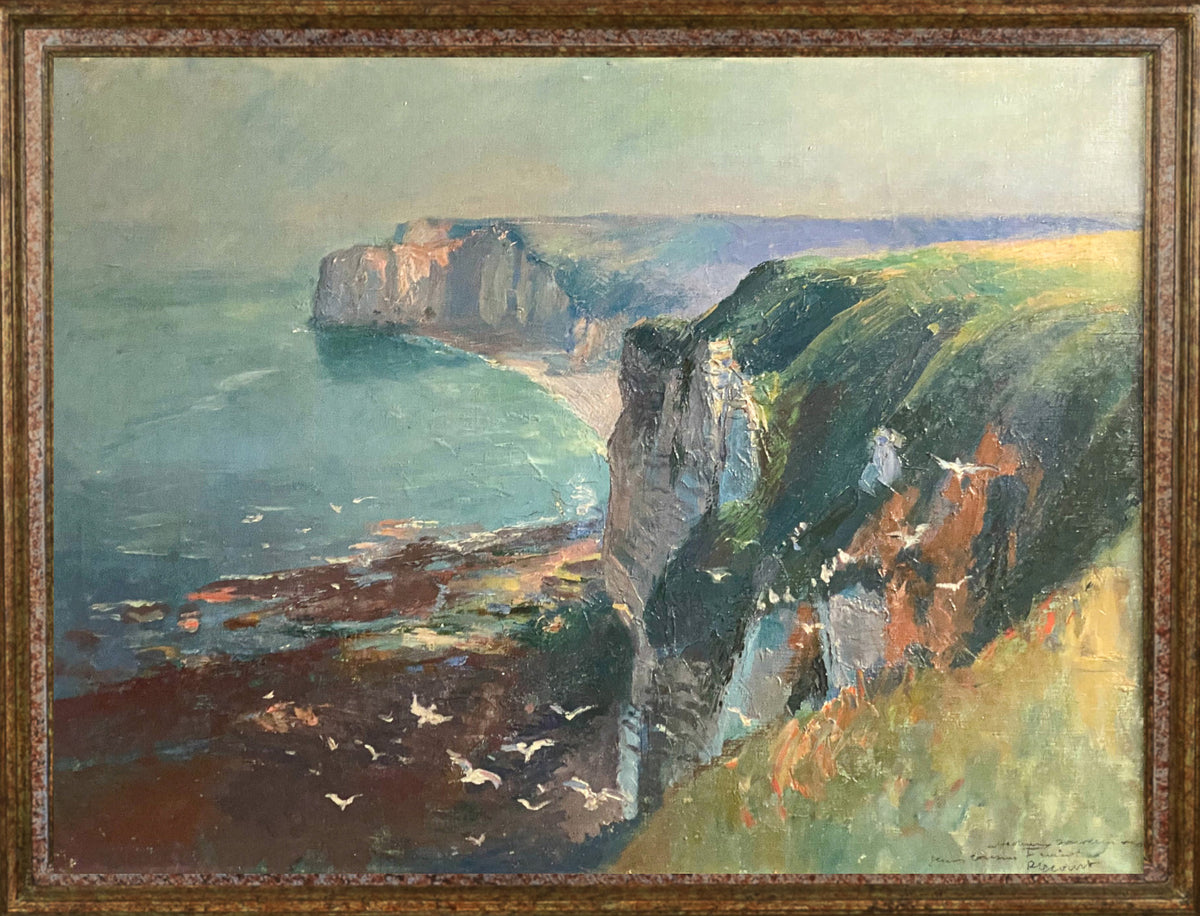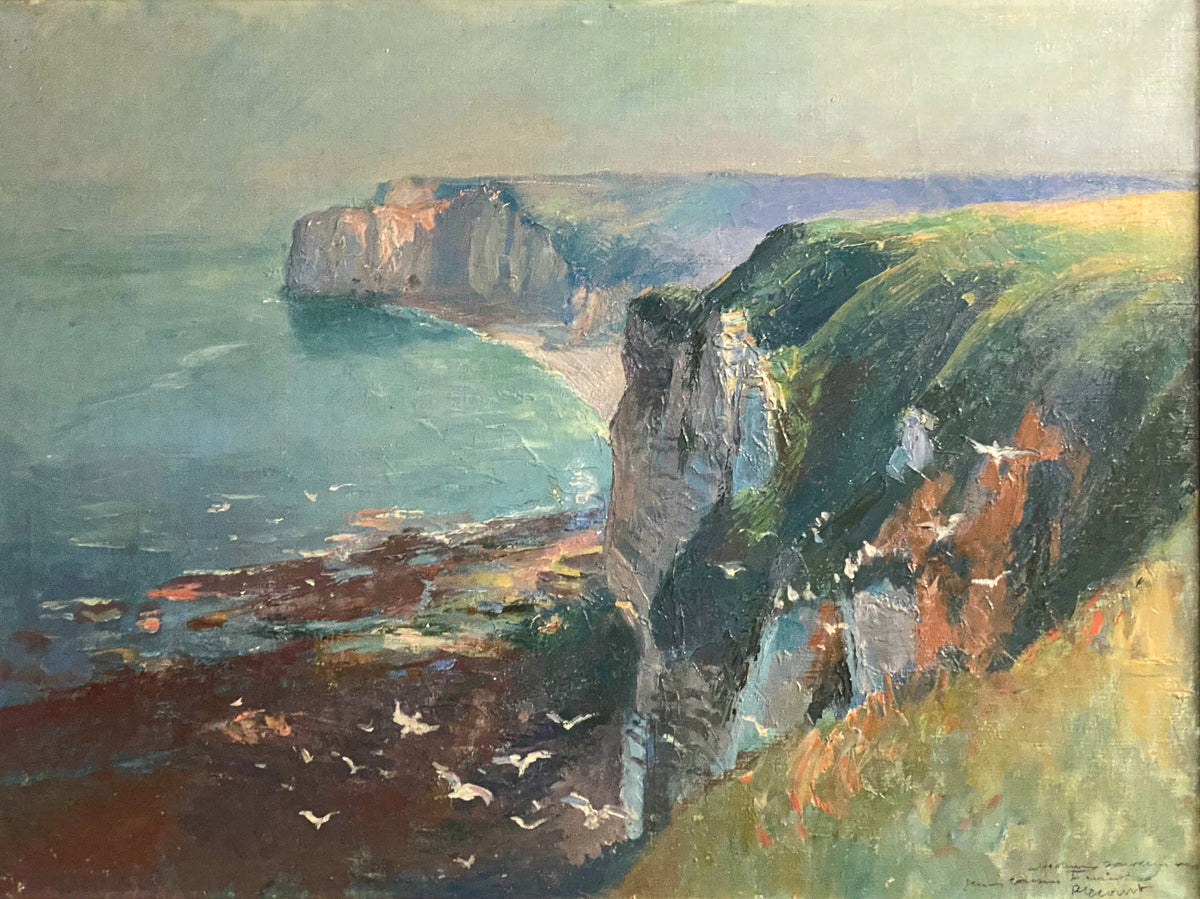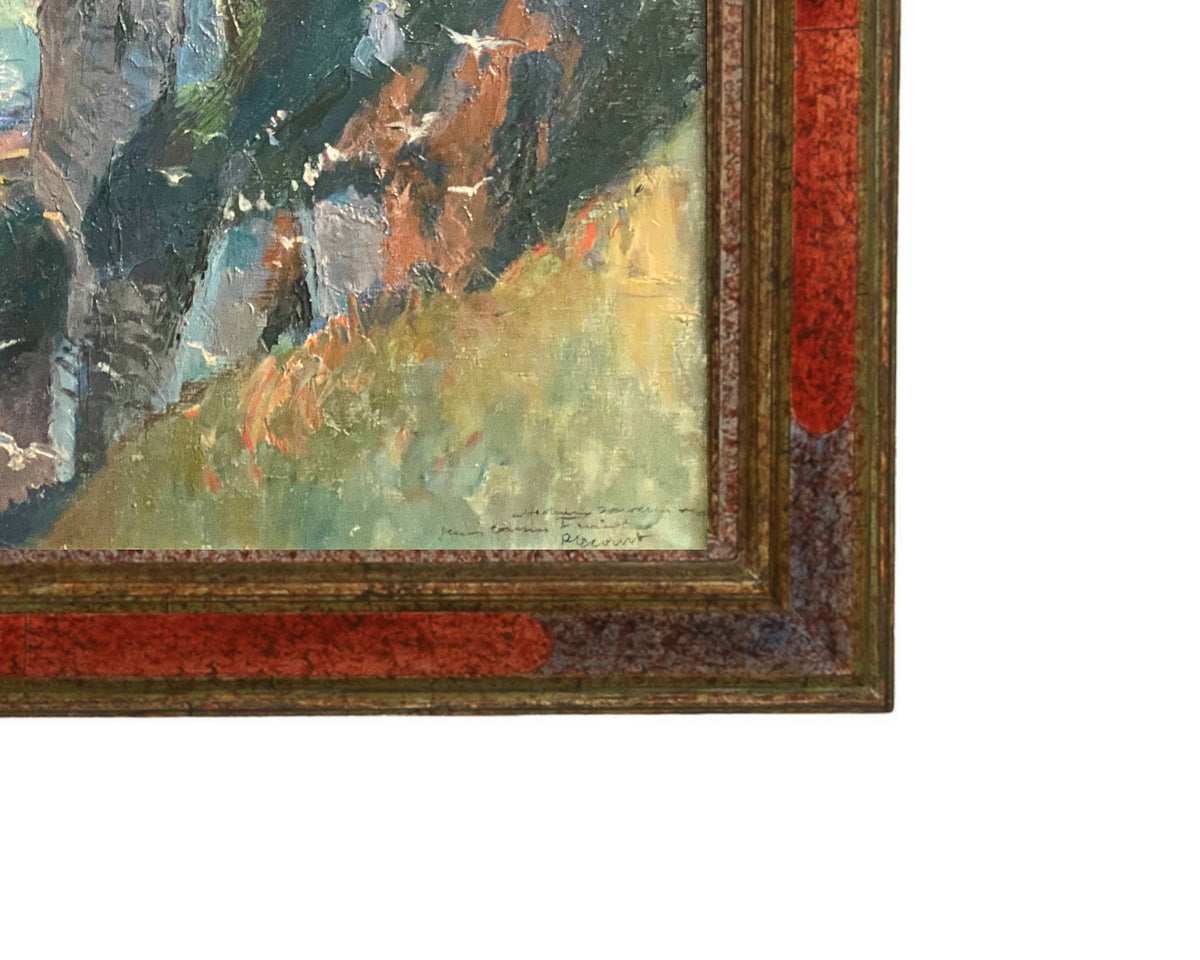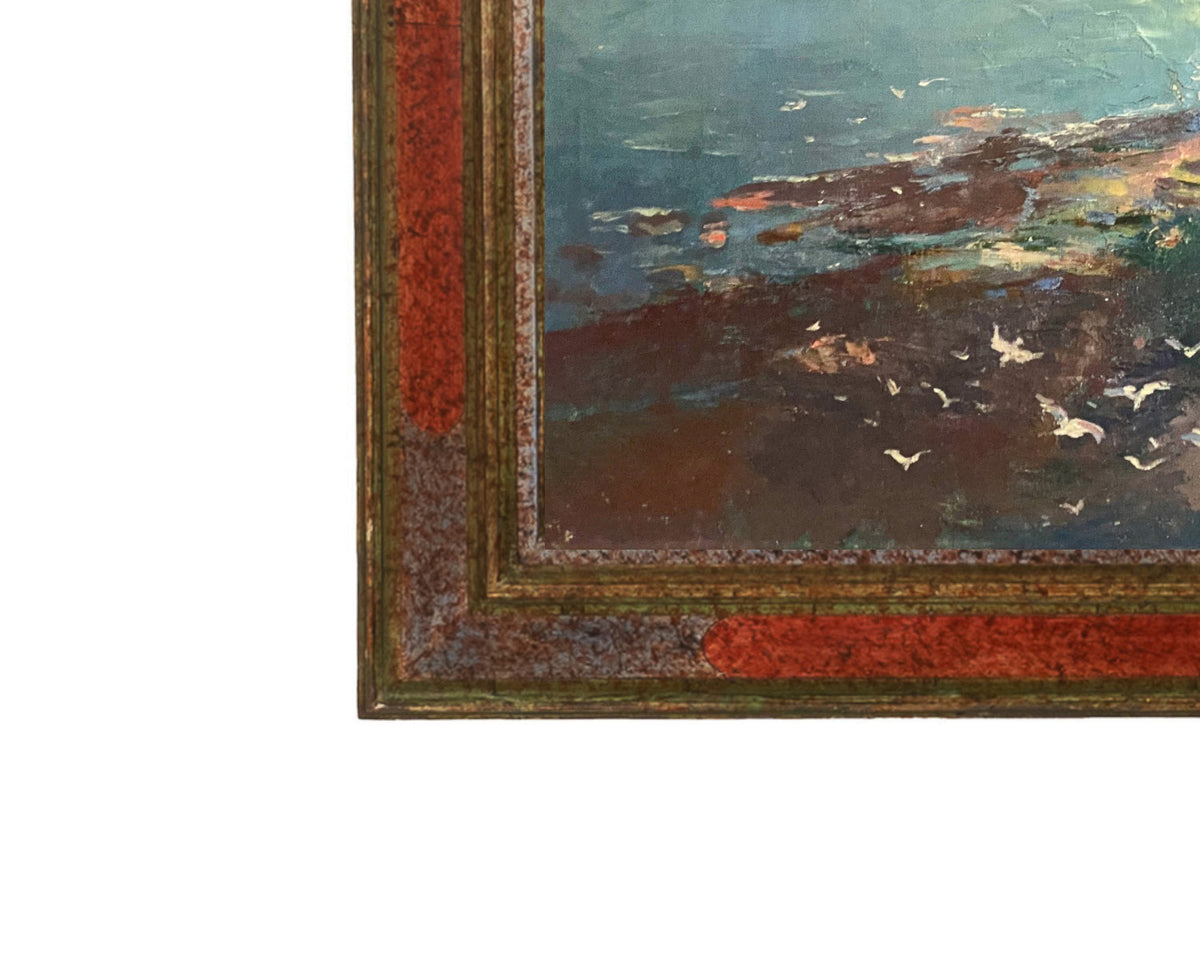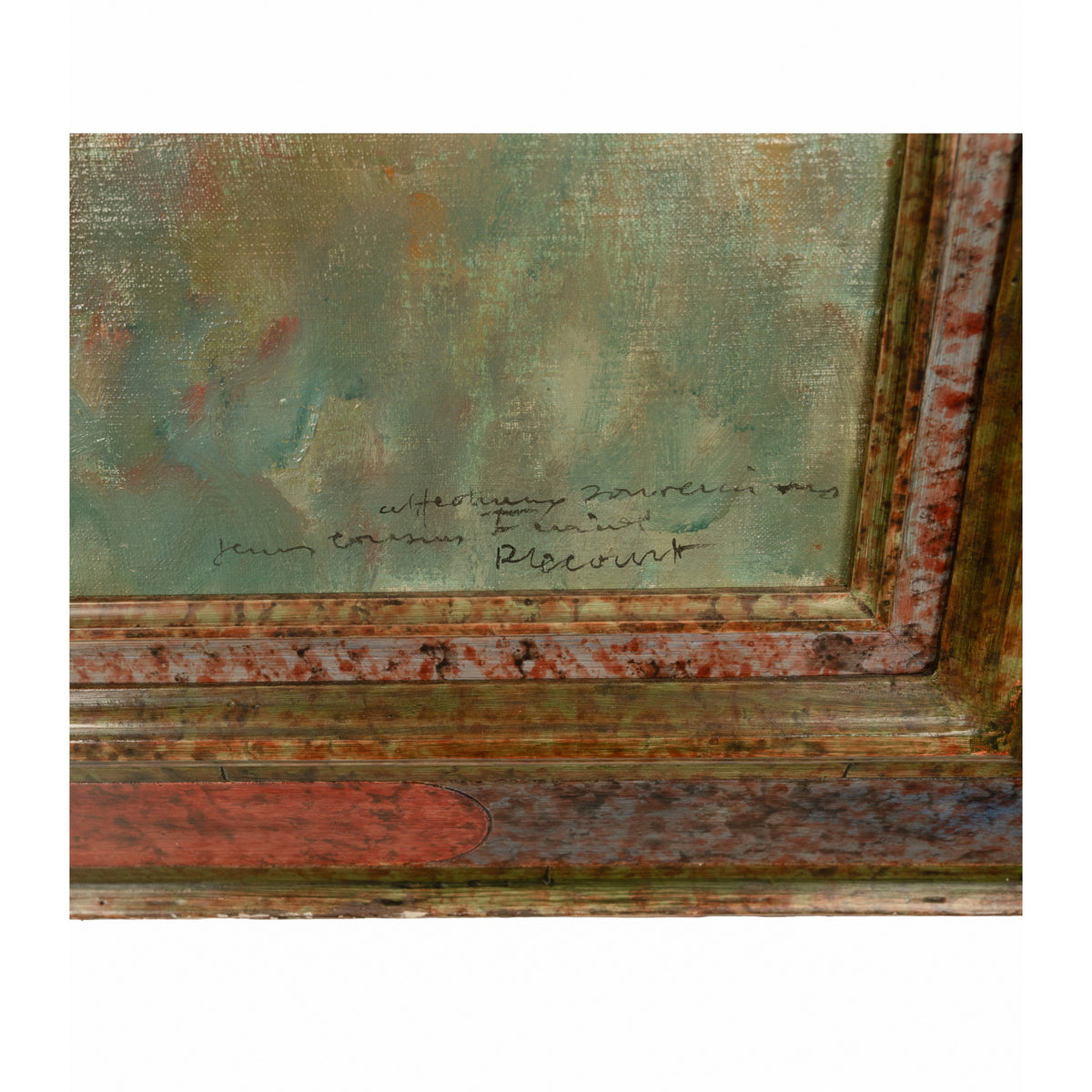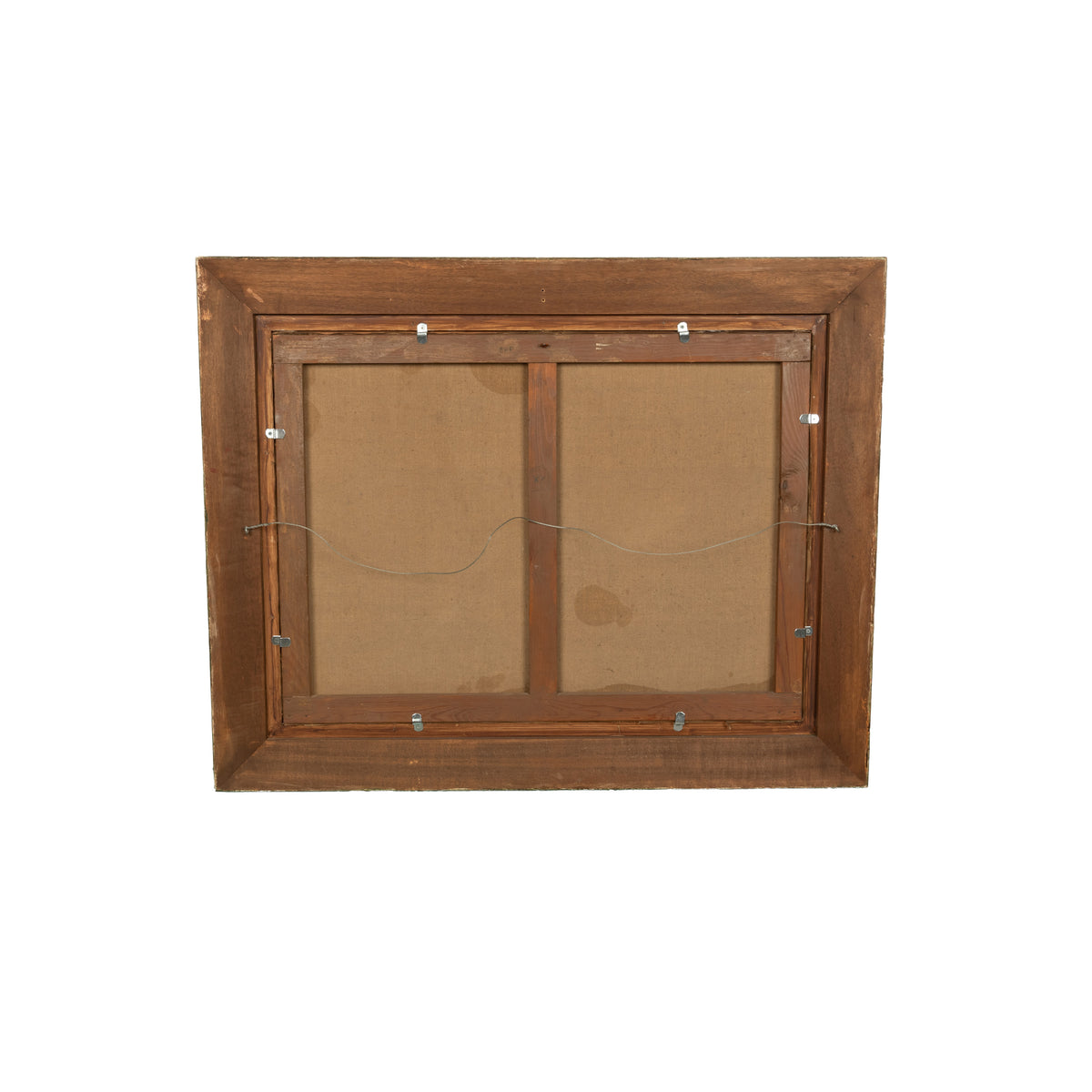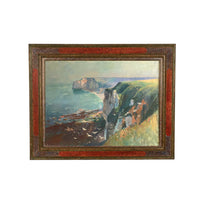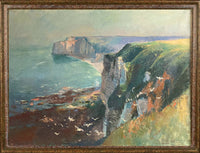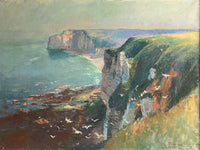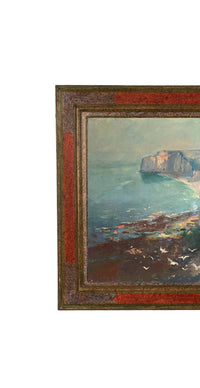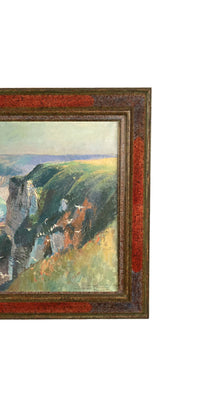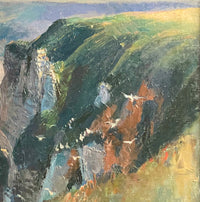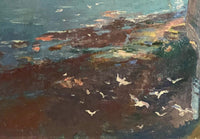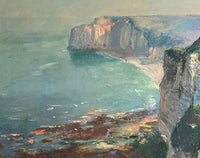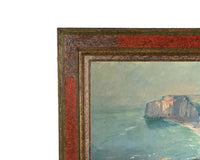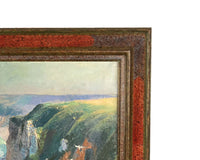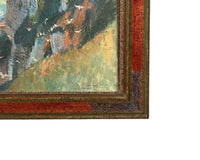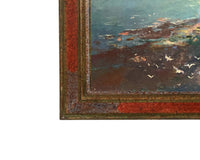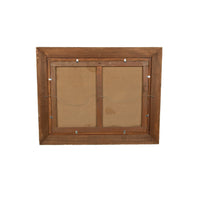Antique French School Oil Painting on Canvas Cliffs at Etretat Normandy France by Raimond Louis Lecourt 1910
- Regular
- $ 6,200
- Sale
- $ 6,200
- Regular
- Unit Price
- per
A fine & large antique oil painting on canvas by Raimond Louis Lecourt (1882-1946), the cliffs at the Atlantic Ocean, Etretat, Normandy, France, circa 1910.
Lecourt was the quintessential painter of scenes of Normandy France, this is a large and very fine example of his work. The painting depicts the Falaise d' Amont located near Etretat, Normandy, the Falaises (cliffs) are on the Atlantic coast and are a very impressive formation of flint cliffs with huge naturally created archways. The painting is beautifully rendered and in some areas the artist has employed impasto technique (thickly applied paint) to provide texture to the ocean & cliffs, in the foreground of the cliffs is a flock of herring gulls circling overhead. The painting is signed "Lecourt" lower right with a dedication, the painting is housed in the original sponge decorated gesso frame, also created by the artist. Condition is excellent, this charming painting is ready to hang on your wall.
The artist was born in Le Havre, and studied at the National School of Fine Arts and the Regional School of Fine Arts of Rouen, he studied under Charles Lhuillier and Léon Bonnat. He received the Croix de Guerre 1914-1918
Military medal during WW1. Lecourt studied at the Le Havre School of Fine Arts under the direction of Charles Lhuillier , then with Léon Bonnat at the Paris School of Fine Arts . He then lived in Fontaine-la-Mallet , where he painted in the Normandy region, which was his favorite subject.
In 1899, Lecourt obtained the honorary prize for the upper course with the city's silver medal. A municipal scholarship which allowed him to enter the Paris School of Fine Arts in the studio of the painter Léon Bonnat . There he found his comrades from Le Havre who had preceded him there: Othon Friesz , Raoul Dufy , the brothers René and Henri de Saint-Delis .
He debuted at the Salon of French Artists in 1901 with his painting Le Herseur . He completed his studies in the studio of Luc-Olivier Merson and it was around this time that he got into the habit of spending his holidays in Fontaine-la-Mallet with his comrade Othon Friesz . He settled there permanently in 1907, after a trip to Brittany from where he brought back numerous sketches and portraits.
During the First World War , he was mobilized on August 1, 1914 in the same regiment and behaved like a hero, decorated with the Croix de Guerre and the Military Medal . During an engagement at Courcy - Brimont , September 14, he was injured by a gunshot to the right forearm. He continued to draw with his left hand then, after a long rehabilitation, he regained the use of his right hand. He became a member of the Society of French Artists, also exhibited at the Salon des Indépendants, and made regular submissions to the Salons. Many paintings by him appear in museums & galleries in Denmark , Germany, the United States, Japan, and in England where the "Dogs of the Duchess of Manchester" painting was exhibited and won Lecourt great acclaim.
After the outbreak of World War II, Lecourt takes the German Occupation of France very badly. After General Philippe Petains's handshake with Hitler in Montoire-sur-le-Loir, he returned his military medal to the Chancellery, accompanied by this comment: "We have no need for decorations in a country which no longer has the sense of honor"
During this period, he resided with Charles Toussaint, a Le Havre broker and companion from the 74th infantry regiment, at the Frescinet manor, a property which would disappear under the bombings of the September 11, 1944. At this time, he painted mainly on wood, as canvases were rare and expensive at this time.
In the winter of 1943-1944, he was hit by a military truck which skidded on the ice, during the fighting for the liberation of the port of Le Havre, the village of Fontaine-la-Mallet, where he lived, was raised to the ground under heavy bombing. His house, his studio, his notes and sketches were destroyed. However he went back to work with courage, but something had broken inside him. The following winter, he caught a cold and contracted pneumonia which took him away in eight days, unable to be properly treated following the refusal of an American army colonel, to give to civilians penicillin that only the Americans had at the time.
His friends mourned him and others said that he was a gifted painter of Cauchoise (Normandy) painting, and who knew so well how to render plough horses, Normandy cows, stables and planted courtyards that was quickly disappearing. We now know that Raymond Lecourt was something more than a brave man who raised his large family. He was a great painter, and one of the leaders of the School of Norman painting of the early 20th century
He is buried in the Fontaine-la-Mallet cemetery .
Imperial
ches high × ches wide × ches deep
Metric
high × wide x deep
Displayed rates are for shipping in the Continental U.S. and Canada. For other locations, kindly contact us and we will provide the most competitive shipping price available. All shipments are professionally packed and shipped insured with full tracking capabilities. Customers are also welcome to collect their items from our warehouses or arrange their own shipping.

